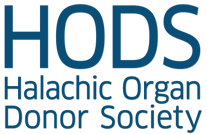This article evaluates the textual variations of Talmud Yoma 85a concerning the sign of life and death. While the standard printed edition of the Talmud, records the debate as between checking the nostrils (respiration) and the heart (for heartbeat) most manuscripts including, the Talmud Yerushalmi, record the debate as between the nostrils and the navel.
Author Archives: admin
Enough: The Failure Of The Living Will
Organ Transplants from Living Donors (Kidneys)
Musar Kliyot (in Hebrew)
Article about Moshiko.
Consideration of a Donation- Powerpoint Presentation
This discusses non-economics apsects
Consideration for a Donation: Economic Aspects, Powerpoint Presentation
The Potential Benefits of the Pediatric Nonheartbeating Organ Donor
This study examined the population of a large hospital’s pediatric intensive care unit to determine the potential importance of organ donation from donors without heartbeats. Children in the intensive care unit tend to be sicker than their adult counterparts. They have a higher rate of severe neurological damage and die faster when removed from life support. The study was prompted by the request of two families to donate their children’s organs though no formal program existed at the time of publication. Researchers found that routine use of non-heart-beating donation could increase the donor pool by an estimated 42% at their center. These findings demonstrate that pediatric donors without heartbeats would be ideal candidates for organ donation and call for the establishment of pediatric non-heart-beating criteria.
Consideration for a Donation
Future Market: The Sale of Human Body Parts
Transplantation of Kidneys From Donors Whose Heart Have Stopped Beating
This study assessed the efficacy of transplanting kidneys from donors without heartbeats. Using data from the Kidney Transplant Registry, researchers found that transplantation from non-heart-beating donors were often successful at one year and should be considered a reasonable method to increase overall kidney transplant supply. Kidneys from donors who had undergone a unrecoverable trauma had the highest rate of success (vs. death from other causes). In the early period, these kidneys did not function as well, causing recipients to undergo dialysis in the first week after transplant. By one year, the success rate was comparable to kidneys obtained from brain dead patients. Kidneys from donors without heartbeats could represent a considerable supply for transplantation. Some estimate these kidneys could double the number of kidneys available for transplant and should be used to decrease the waiting list for kidneys.
